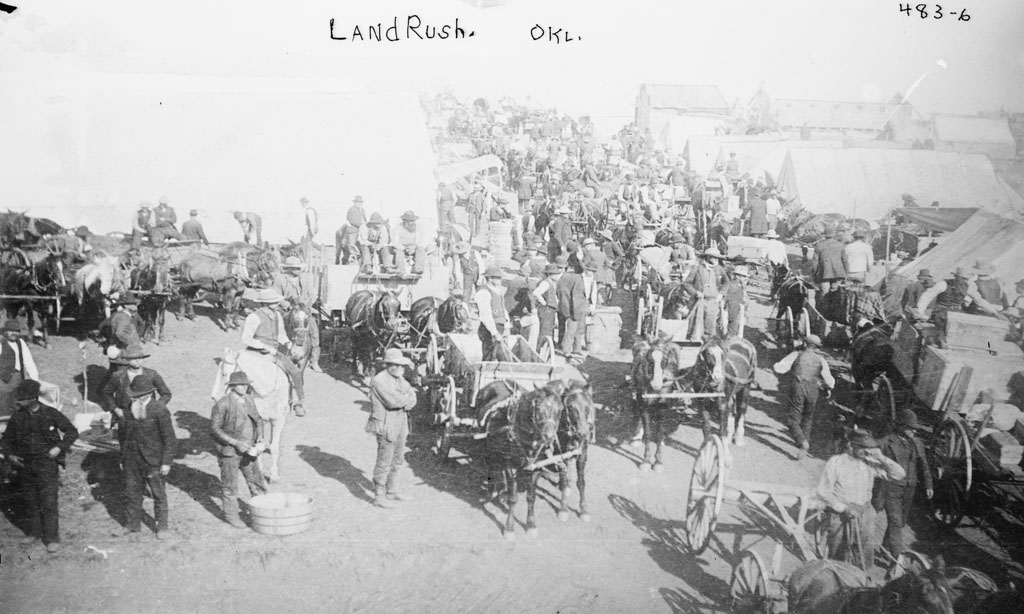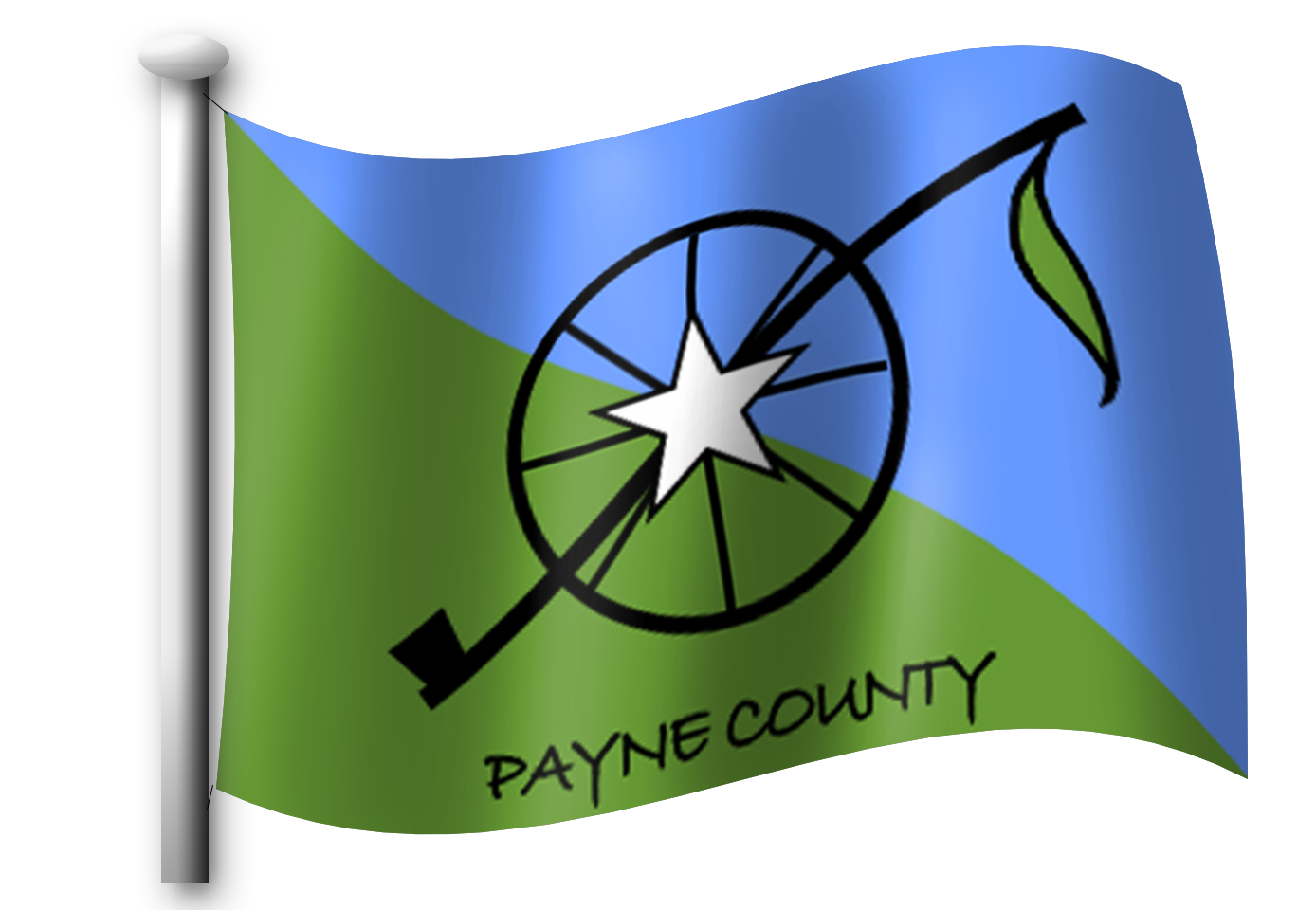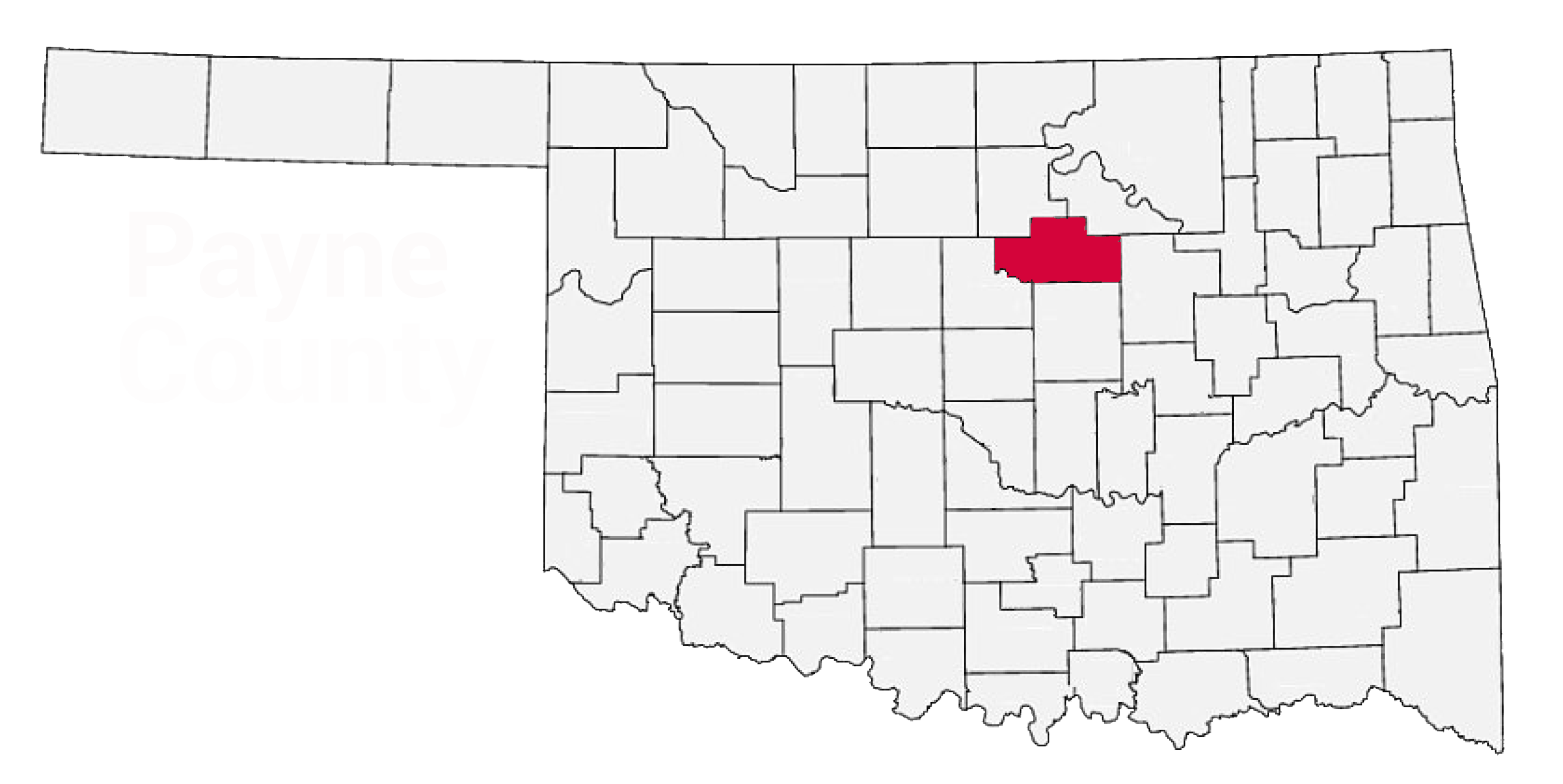
The History of Payne County
Most of the land that is now Oklahoma was acquired by the United States in 1803 as part of the Louisiana Purchase. Part of this land, which later became Eastern Oklahoma, was used to relocate nearly 50,000 eastern Indians to what was termed "Indian Territory." Indian Territory originally extended beyond present-day Oklahoma, but the size was gradually reduced over the course of the 1800's.
The Indians were relocated from their land as American demand for Indian nations' land increased. President Andrew Jackson declared that removal of the Indians would "incalculably strengthen the southwestern frontier." Clearing Alabama and Mississippi of their Indian populations, he said, would "enable those states to advance rapidly in population, wealth, and power." The first major step to relocate American Indians came when Congress passed, and President Andrew Jackson signed, the Indian Removal Act on May 28, 1830. By the 1840s, nearly all Indian tribes had been driven west.
As land in the Indian Territory was assigned to different tribes over the years, there remained one last parcel of land. It was referred to as "Unassigned Lands" and embraced portions of the counties of Payne, Logan, Oklahoma, Cleveland, Canadian, and Kingfisher. The unassigned lands, which belonged to the government, caught the attention of a group known as the Boomers. The Boomers were intent on settling this land. The first colony of Boomers arrived in May, 1879 but were removed by United States troops.
Capt. David L. Payne had become the recognized leader of the Boomers. During the next five years, Payne led at least eight different attempts to settle colonies in Oklahoma. He was often arrested, but never tried. He was repeatedly driven out of the territory but the government always declined to prosecute him.
After the death of Captain Payne in 1884, William Couch suceeded him as the leader of the Boomers. The Boomers' efforts were finally rewarded when on March 23, 1889, President Benjamin Harrison issued a proclamation setting the time of the proposed opening of the unassigned land to settlement. On April 22, 1889, promptly at noon, the cavalrymen who patrolled the borders of the unassigned land, fired their carbines in the air as a signal that the settlers could move across the line. A shout arose and the race for claims and homes began. Hundreds crowded the trains of the single railway line that entered Oklahoma, thousands rode on horses, buggies, and some even made the race on foot.
Following the Land Run of 1889, Payne county was one of the first counties established by the Organic Act of 1890. The Organic Act provided that there should be seven counties organized and named by number in the new territory. Payne County was Number Six, but later renamed to Payne County after Captain David L. Payne.
Image Source: Bain News Service, Publisher. Land rush, Okla. Oklahoma. [No Date Recorded on Caption Card] Photograph. Retrieved from the Library of Congress,

